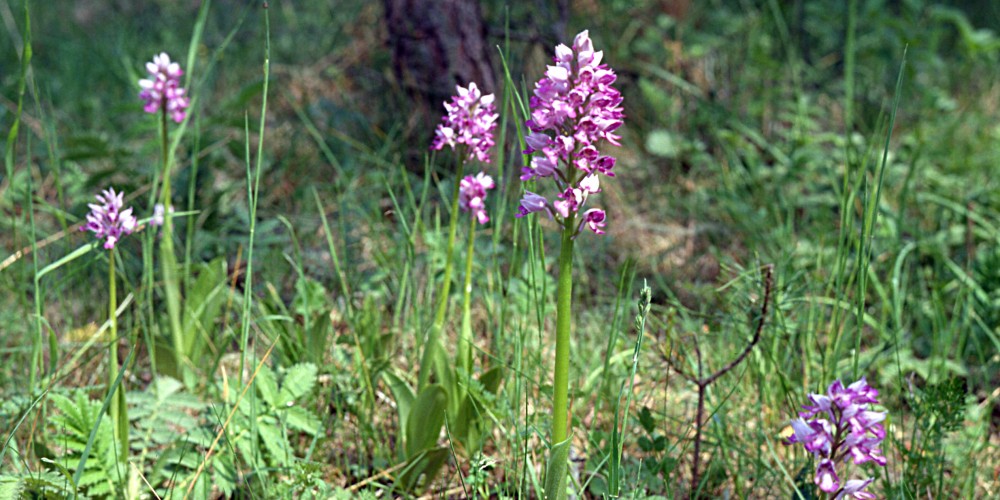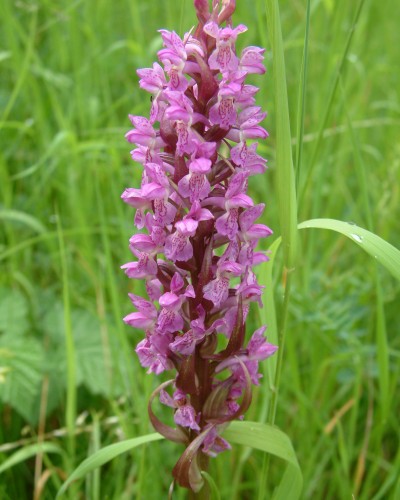Orchid meadow
Background
Drainage methods often facilitate intensive agricultural cultivation. Unfortunately this also causes wet meadows to disappear from our landscape including the orchid species on them, such as the Stripe-leaved Marsh Orchid (Dactylorhiza incarnata) and the Broad-leaved Marsh Orchid (Dactylorhiza majalis).
Both species of orchids bloom from May onwards. The scientific name of the Broad-leaved Marsh Orchid even contains the month in which it blooms: majalis refers to May. At Pentecost, the plant develops beautiful inflorescences – consisting of up to 40 individual flowers.
Across Germany, the population of the Marsh Orchid is continually dropping. This can be attributed to the intensive use of agricultural fertilisers as the plants do not respond well to high nitrogen input.


